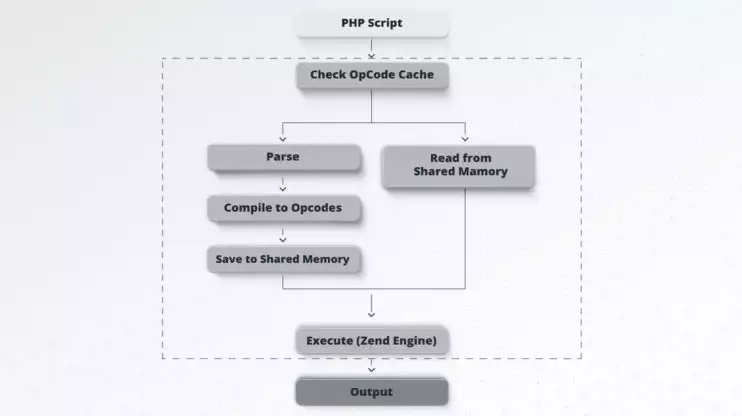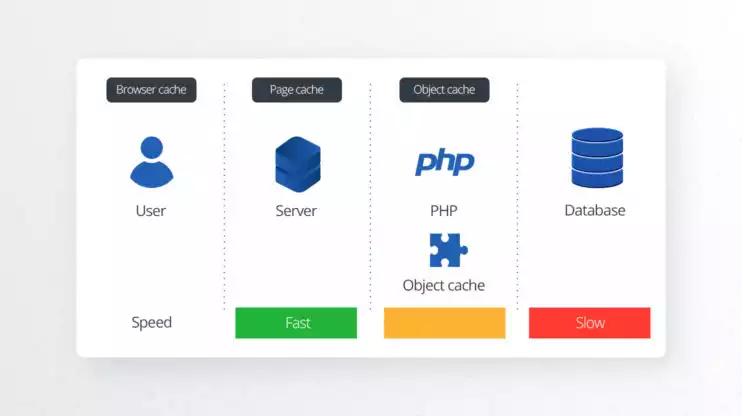What are Cache Types?
In computing, different cache types play an essential role in improving performance and reducing input/output workload. Nearly every layer of the IT ecosystem benefits from multiple types of hardware and software cache types. Central Processing Units (CPU) operate faster, operating systems run quickly and smoothly, and web servers and applications are more reliable and responsive.
What are web cache types?
On the web, networks use caching to optimize web server performance and improve user experience by responding to web requests as quickly as possible. Frequently requested data is stored temporarily in a cache for faster retrieval the next time the same data is requested. Hypertext Transfer Protocol (HTTP) allows us to dictate which files to cache and how long to store them.
Different types of caching occur at multiple stages during a page request or while a web application is running. The resulting cache layers each perform specific actions to improve the time it takes to display web content.
Opcache
Opcache is a caching engine built into PHP. It eliminates the need to load and parse scripts for each request by caching precompiled script bytecode. In other words, once a page’s PHP script executes, the resulting machine-readable code is stored in the server’s cache memory. Later requests bypass the PHP engine and receive the faster-loading cached data.

Database cache
Database caching reduces the number of database queries and connections. Results of database queries are cached so they can be accessed more quickly for later requests. Various web caching layers, such as page caching or object caching, can include cached database query results.
Object Caching
Object caching stores results of database queries for faster retrieval during subsequent requests. Object caching is enabled by default in WordPress, but the stored data is only used for the original request. Each later request requires another database query. Persistent cache storage solutions like Redis, Memcached, or APCu are often configured to work with the native WordPress object cache so that cached data can be used for multiple requests.
Page cache
Dynamic pages, usually written in a language like ASP, AJAX, CGI, or PHP, take additional time to generate compared to traditional static web pages. Page caching stores dynamic web pages as static files. For example, when a web application such as WordPress dynamically generates a web page, the resulting page is cached as a pre-built HTML file. Popular page caching solutions such as Nginx FastCGI Cache and Varnish are designed to serve these types of static files as quickly as possible.
Plugins like WP Super Cache and WP Rocket can add caching to WordPress sites. Instead of waiting for page resources and database queries to load a web page, these caching solutions also help improve page load times by storing dynamic pages as static files.
Specialized web hosts offer optimized platforms for WordPress that include custom caching implementations. These web hosts design their servers and products to provide the best environment to complement and support WordPress sites. For example, at 10Web, we run Nginx and FastCGI caching on top-of-the-line server technology so that every site hosted on our AI-powered platform automatically receives a 90+ PageSpeed score.
Browser cache
Web browsers like Chrome, Firefox, and Safari all have built-in systems for caching. Certain page files like HTML, stylesheets, JavaScript, and media are stored on your local hard disk when you visit a web page. The next time you visit the page, the web browser uses the cached files instead of requesting them from the server again, resulting in a faster page load.
Many browsers feature an incognito or private mode that only stores data in the cache for that session. Once the incognito tab or window closes, the cache is also cleared, along with other user data such as history and cookies.

Distributed caching
These cache types support the entire internet by efficiently directing web traffic or delivering web content from a distributed network.
CDN caching
A Content Delivery Network (CDN) uses server-side caching, load balancing, and web accelerators to store web content and respond efficiently to browser requests with the appropriate data. This type of distributed caching stores web content in strategically located data centers across the globe so that users in any region can access stored content from a nearby location. Not only does this provide a faster website speed, but the redundancy created by a distributed network means that websites experience more uptime. With multiple servers sharing the workload and data, websites remain accessible and responsive during server restarts or network failures.
DNS caching
While this type of cache doesn’t store web content, it does reduce page load time by storing the IP addresses associated with specific domains. The Domain Name System (DNS) uses server caching to store DNS lookup information. Instead of making a round trip through multiple servers and name servers to retrieve a domain’s IP address each time it’s requested, the DNS keeps this information cached. Once a domain’s Time to Live (TTL) expires, the DNS refreshes the cached domain records so that any recent changes are reflected in the cached data. Personal computers also feature a local DNS cache where domain IP addresses are stored temporarily for future reference.



